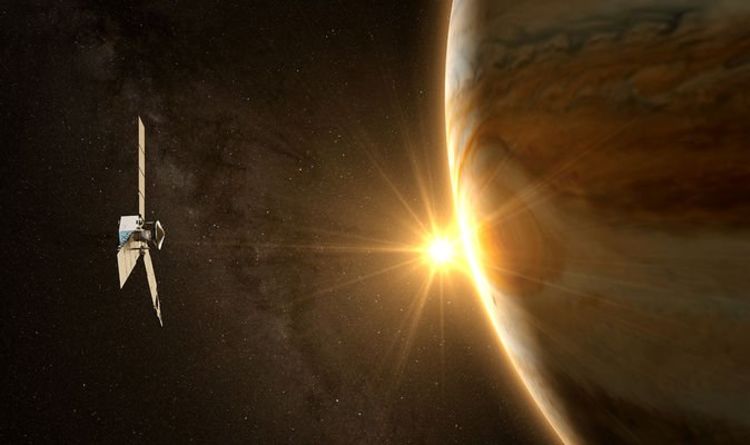NASA has spent years navigating Jupiter to understand the origin and evolution of our solar system’s largest planet. And over the summer, researchers collecting radio waves from Ganymede made a surprising find — their recording of Jupiter’s largest moon, when adapted to human ears, sounds like R2-D2.
The Juno mission, which launched in August 2011, arrived at Jupiter in July 2016. The Juno spacecraft has completed dozens of orbits around the planet, and on June 7, it flew closer to Jupiter’s largest moon than any other in more than 20 years, coming within 645 miles of the moon’s surface.
As it got close to Ganymede, NASA’s Waves instrument collected data from electric and magnetic radio waves. Researchers then shifted the frequencies of these waves to make them audible, creating a 50-second moon track filled with chirps, beeps and boops that sound a lot like R2-D2 on its own mission in a galaxy far, far away.
Scott Bolton, the principal investigator of the Juno mission, debuted the audio track at the American Geophysical Union fall meeting in New Orleans on Friday.
“This soundtrack is just wild enough to make you feel as if you were riding along as Juno sails past Ganymede for the first time in more than two decades,” he said in a NASA statement. “If you listen closely, you can hear the abrupt change to higher frequencies around the midpoint of the recording, which represents entry into a different region in Ganymede’s magnetosphere.”
Audio of Juno’s Ganymede Flyby
This 50-second animation provides an auditory as well as visual glimpse at data collected by Juno’s Waves instrument as the spacecraft flew past the Jovian moon Ganymede on June 7, 2021. The abrupt change to higher frequencies around the midpoint of the recording represents the spacecraft’s move from one region of Ganymede’s magnetosphere to another.
Willam Kurth, lead co-investigator for the Waves project, said that it’s possible the change in frequency is “due to passing from the nightside to the dayside” of the moon.
Ganymede, which is bigger than the planet Mercury and the dwarf planet Pluto, is believed to have an underground saltwater ocean, according to NASA, and is thought to have more water than all the water on Earth’s surface.
It’s the only moon known to have its own magnetic field.
At the conference, Bolton also unveiled “incredibly beautiful” new images of Jupiter.
“It’s really an artist’s palette. This is almost like a Van Gogh painting,” he said during a conference news briefing. “You see these incredible vortices and swirling clouds of different colors.”
Those vortices, researchers said, resemble vortices seen in Earth’s oceans, and are believed to spontaneously emerge and “survive forever.”
“Although Jupiter’s energy system is on a scale much larger than Earth’s, understanding the dynamics of the Jovian atmosphere could help us understand the physical mechanisms at play on our own planet,” NASA said.


